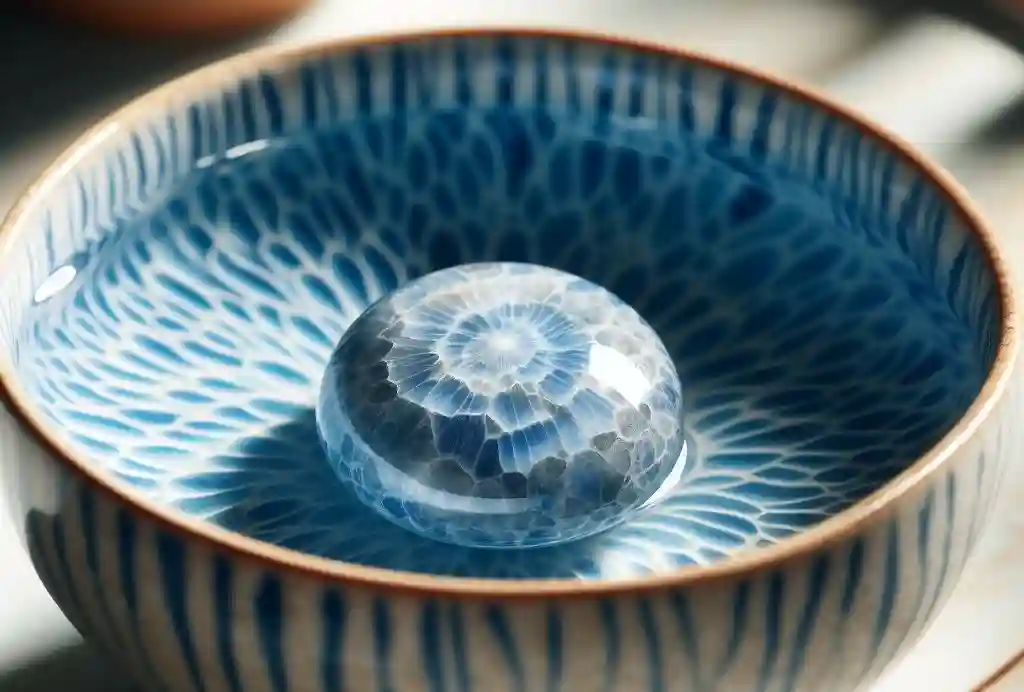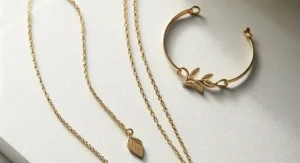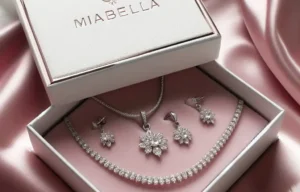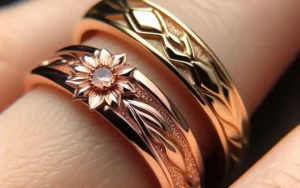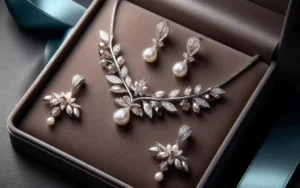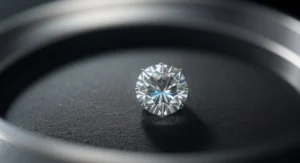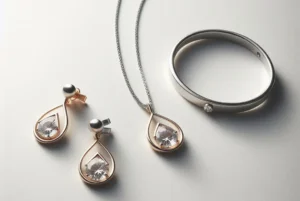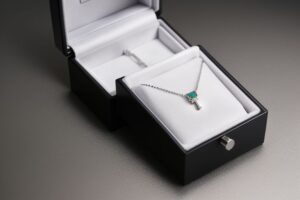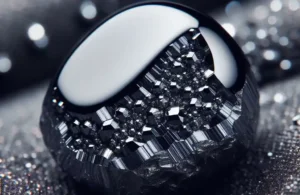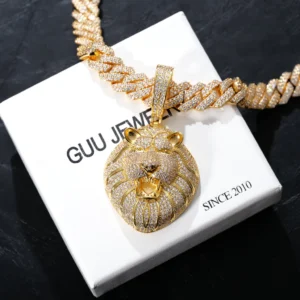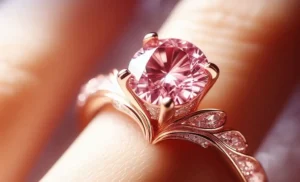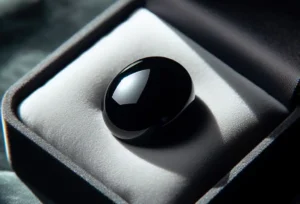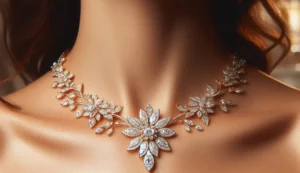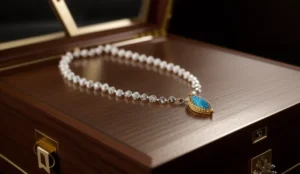Can Rhyolite Go in Water? In the realm of jewelry, natural stones are alluring not only for their beauty but also for their unique properties and stories.
Among these captivating materials is rhyolite, an increasingly popular volcanic rock in jewelry design. But with its stunning patterns and colors comes a question many enthusiasts ask: Can rhyolite jewelry survive in water?
This deep dive seeks to unravel the mysteries of rhyolite’s interaction with water, ensuring enthusiasts can enjoy their pieces for years.
Can Rhyolite Go in Water?

Yes, rhyolite can go in the water, but with caveats to consider for the longevity and beauty of your rhyolite jewelry:
– Brief exposure to water, like occasional splashes or rain, is generally safe.
– Prolonged immersion should be avoided to prevent potential water damage from absorption, especially in chlorinated or saltwater.
– Frequent exposure to water can increase the risk of chemical reactions with the minerals in rhyolite, leading to alterations in appearance.
-It’s crucial to dry rhyolite jewelry thoroughly after it comes into contact with water to maintain its integrity.
– Protective measures, such as removing jewelry during water-related activities, are recommended to preserve it.
By being mindful of these guidelines, you can enjoy your rhyolite jewelry without undue concern for water exposure.
Understanding the Composition of Rhyolite
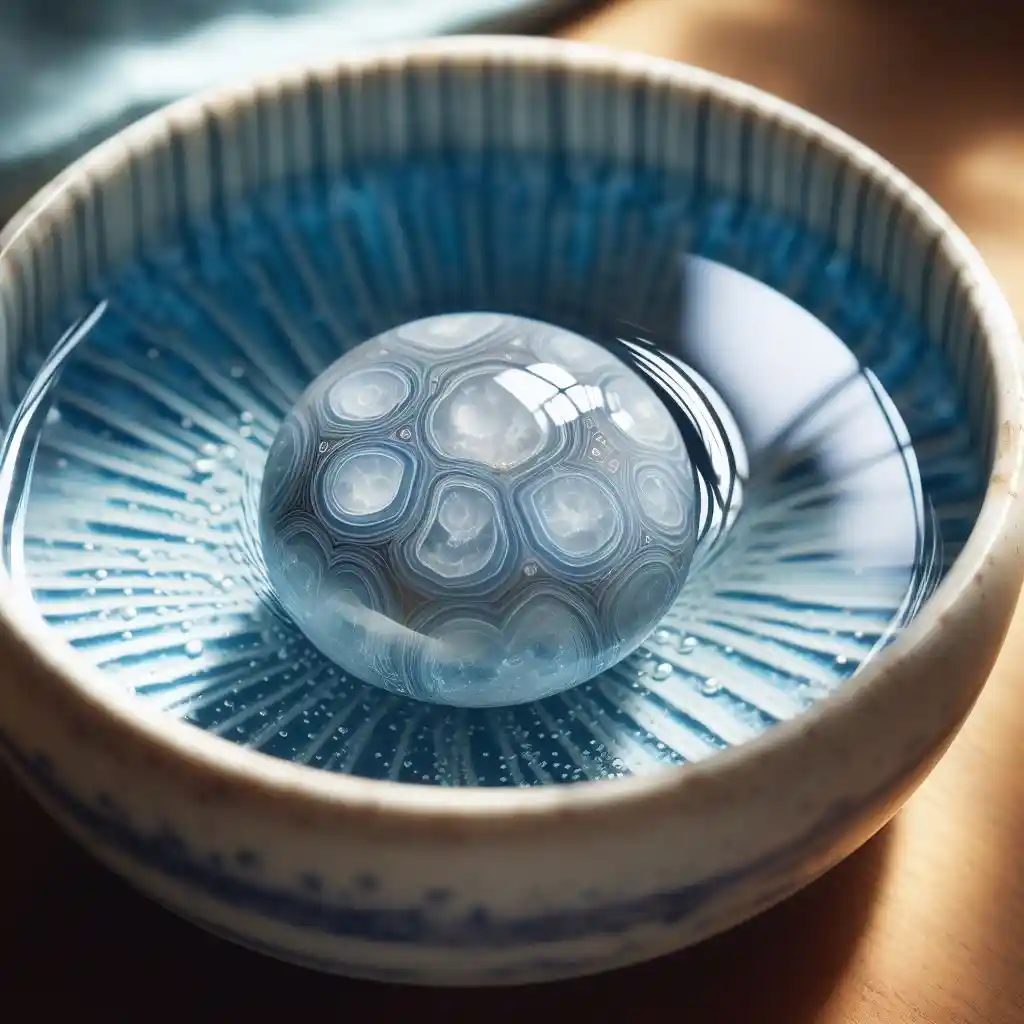
Rhyolite originates from volcanic activity and is characterized by its high silica content, which gives it a somewhat glassy texture interspersed with various minerals.
This unique formation process yields a visually striking rock, with patterns and hues that vary significantly from one piece to another.
The primary components of rhyolite include quartz and feldspar, which contribute to its durability and allure in jewelry making. Additionally, it may contain traces of mica, adding to its reflective qualities and visual depth.
These combined minerals create a complex interplay of colours and textures, uniquely captivating each rhyolite jewellery.
The presence of these minerals not only defines rhyolite’s aesthetic appeal but also influences its physical properties, impacting how it interacts with external factors like water and wear over time.
Understanding these mineralogical aspects is crucial for appreciating the beauty and preserving the integrity of rhyolite jewelry.
The Importance of Hardness and Porosity
Assessing a gemstone’s compatibility with water involves understanding its hardness and porosity. On the Mohs scale, rhyolite ranks between 6 and 7, reflecting its capability to resist scratches and minor impacts, which contributes to its wearability in jewelry.
However, the scale of porosity, or the gemstone’s ability to absorb liquids, presents another critical consideration. Though rhyolite is comparatively less porous than many stones, variations in its structure can elevate the risk of water absorption.
This is crucial because absorbed water can expedite the wear process, potentially compromising the stone’s appearance and structural integrity over time. Such characteristics underscore the need for cautious water exposure to maintain the stone’s condition.
Recognizing hardness and porosity factors provides a foundation for ensuring the longevity and preservation of rhyolite’s distinctive beauty in jewelry applications.
Water Exposure Risks for Rhyolite Jewelry
When rhyolite jewelry encounters water, particularly for extended periods or frequently, it faces several risks.
Chemicals in chlorinated pools and hot tubs can adversely react with the minerals within rhyolite, potentially leading to discolouration and a weakened structure.
Saltwater exposure is another concern, as it can erode the stone’s surface over time, diminishing its natural lustre and altering its aesthetic appeal.
Rhyolite is not the only thing at risk; the metals and setting materials used in jewellery are also susceptible to water damage.
These components can deteriorate when exposed to moisture, compromising the jewellery’s integrity. Additionally, water can act as a catalyst for introducing harmful substances, further endangering the piece.
The cumulative effect of these factors underscores the importance of mindful wear and care to protect rhyolite jewelry from the potentially damaging impacts of water exposure.
Safe Practices for Wearing Rhyolite Jewelry
To ensure the longevity and vibrance of your rhyolite jewellery. Prioritize removing your rhyolite pieces before engaging in activities where they may come into contact with water, such as swimming, bathing, or doing dishes.
This precaution protects the stone from potential water damage and safeguards against the effects of chemicals and minerals found in various water sources.
Additionally, storing rhyolite jewellery in a cool and dry place will further preserve it when it is not worn. Avoid areas prone to moisture buildup, as prolonged exposure to humidity can harm the stone’s integrity.
For those moments when your jewelry needs a brief rest, consider using a dedicated jewelry box or pouch that offers protection from external elements.
Following these guidelines will help maintain the exquisite appearance and condition of your rhyolite jewelry, allowing you to enjoy its natural beauty without undue concern over water exposure.
Cleaning and Maintenance Tips
To maintain the allure of rhyolite jewelry, a gentle approach to cleaning is paramount. A simple yet effective method involves using a soft, lint-free cloth lightly dampened with water to gently wipe away any accumulated surface dirt and residue.
For a more comprehensive clean, a solution of mild soap mixed with lukewarm water can be applied with a soft brush, ensuring to reach into any crevices where grime may hide.
It’s important to thoroughly rinse the jewelry with clean water to remove any soap residue and to dry it meticulously with a soft cloth.
The use of harsh chemicals, ultrasonic cleaners, or steam cleaning methods should be avoided as these can potentially damage the stone’s surface or alter its natural properties.
Sticking to these simple, non-invasive cleaning techniques will help preserve the vibrancy and integrity of your rhyolite jewelry, keeping it looking as captivating as the day it was acquired.
Expert Opinions on Long-Term Care
Industry professionals emphasize that tailored care is paramount for sustaining the beauty of rhyolite jewelry. Gemologists advocate for regular, professional evaluations to preemptively identify and rectify wear or damage.
This proactive approach maintains the stone’s visual appeal and structural health. Jewelers, on the other hand, recommend a cautious stance on water exposure, highlighting that knowledge of rhyolite’s specific needs is crucial for its upkeep.
They further suggest that the right care regimen can vastly extend the lifespan of rhyolite pieces, making them timeless additions to any collection.
Additionally, these experts stress the importance of gentle cleaning techniques, avoiding harsh chemicals that may compromise thegemstone’ss integrity.
Their collective wisdom underscores a commitment to preserving rhyolite’s natural beauty through informed, conscientious care practices.
Keeping Up with Trends While Preserving Quality
As rhyolite continues to capture the imagination of designers and enthusiasts alike, its inclusion in contemporary jewelry pieces underscores the importance of balancing fashion-forward choices with attentive care.
Rhyolite’s beauty, with its intricate patterns and vivid colors, lends itself to a variety of styles, from classic elegance to modern minimalism.
Embracing these trends responsibly means recognizing the specific care requirements of rhyolite to ensure its longevity. Jewelry creators are increasingly mindful of these needs, often advising on the best practices for maintenance right at the point of purchase.
This conscious approach allows wearers to showcase the latest designs confidently, knowing their cherished pieces are protected against potential damage.
By staying informed and applying recommended care techniques, aficionados can keep their rhyolite jewelry not only trendy but also timeless, making every piece a lasting testament to both personal style and the enduring appeal of natural stones.
Conclusion: Navigating Water and Rhyolite Jewelry with Confidence
The key to incorporating rhyolite jewelry into your collection with assurance lies in understanding its relationship with water.
It’s possible to enjoy these volcanic treasures without worry by being mindful of their exposure to moisture and taking proactive steps to care for them.
Safeguarding your rhyolite pieces from prolonged or frequent water contact will not only preserve their structural integrity but also their enchanting aesthetics.
Embracing the necessary precautions and engaging in regular maintenance rituals allows you to showcase the natural splendor of rhyolite, ensuring that each piece continues to reflect its inherent beauty and uniqueness.
Through informed care, your rhyolite jewelry can remain an exquisite part of your collection, captivating the eye and inspiring admiration for years to come.
FAQs
Q: Is occasional handwashing while wearing my rhyolite ring okay?
A: Brief exposures to water, such as handwashing, generally won’t harm your rhyolite ring. Nonetheless, it’s best to avoid regular contact with soaps and detergents, as these can contain chemicals that might affect the ring over time.
Q: How frequently should I clean my rhyolite jewelry?
A: Cleaning every couple of months is advisable, especially if your jewelry sees regular use. The frequency may need to increase if you often find yourself in environments that expose your pieces to grime or other substances.
Q: Can I keep my rhyolite jewelry in the bathroom for convenience?
A: Storing rhyolite jewelry in humid environments like bathrooms can lead to moisture absorption, which might eventually cause damage. Opt for a cooler, drier storage area to maintain the integrity of your jewelry.
Q: Does rhyolite jewelry fade over time?
A: Rhyolite is generally color-stable, but excessive exposure to direct sunlight or harsh chemicals might lead to some fading. Proper care and limiting exposure to these elements can help maintain the vibrant colors of your rhyolite jewelry.

